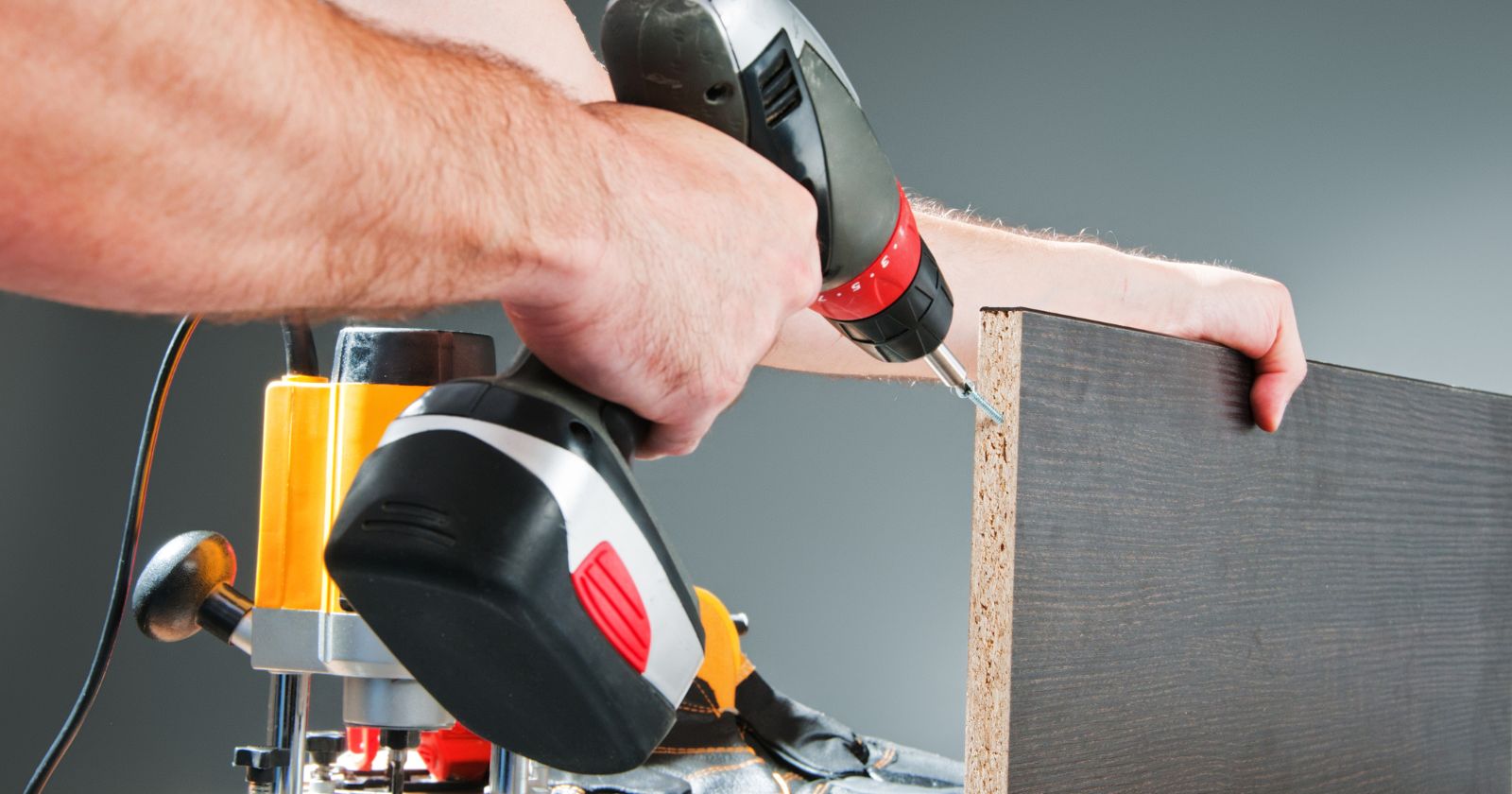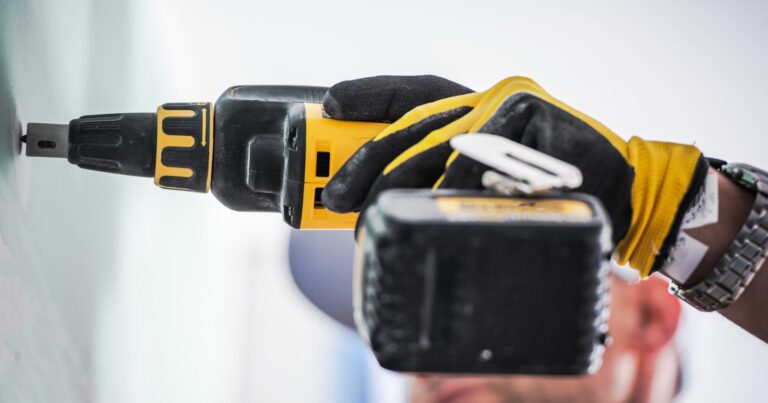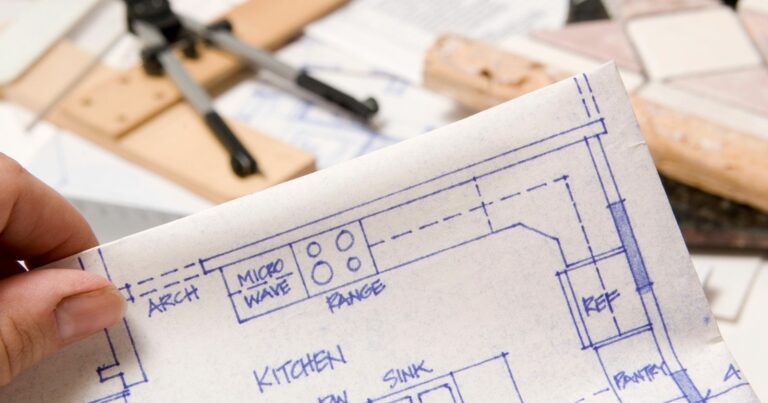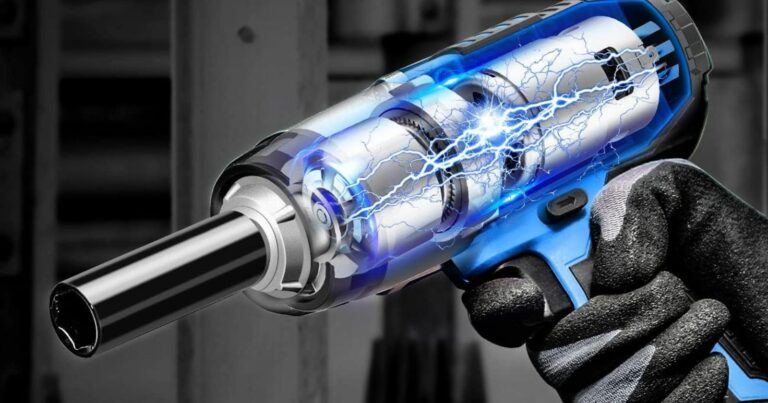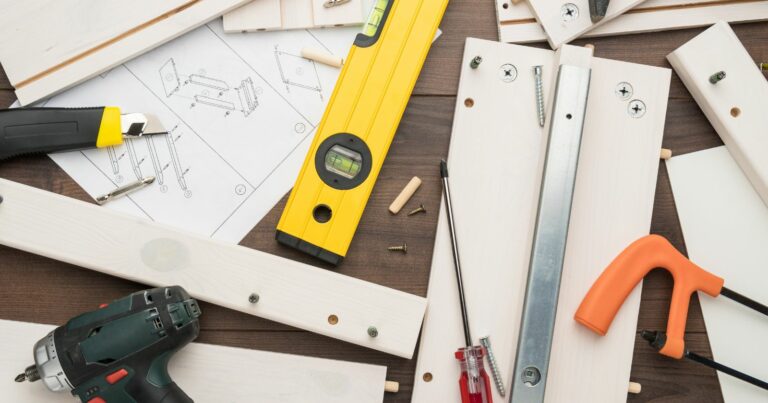Proper Technique For Driving Screws With An Impact Driver
When it comes to home improvement projects or professional construction tasks, having the right tools in your arsenal is not just an advantage, it’s a necessity. Among the myriad of tools that can make a significant difference in the quality and efficiency of your work, one stands out for its specific purpose and effectiveness: the impact driver. Today, I will be diving deep into the world of Driving Screws With An Impact Driver, a technique that revolutionizes how we fasten materials together.
In this post, I will explore the ins and outs of using an impact driver for driving screws, from choosing the right tool for your needs to mastering advanced techniques for flawless execution. So, grab your gear, and let’s get into the nitty gritty of making your projects more efficient and enjoyable with the help of an impact driver.
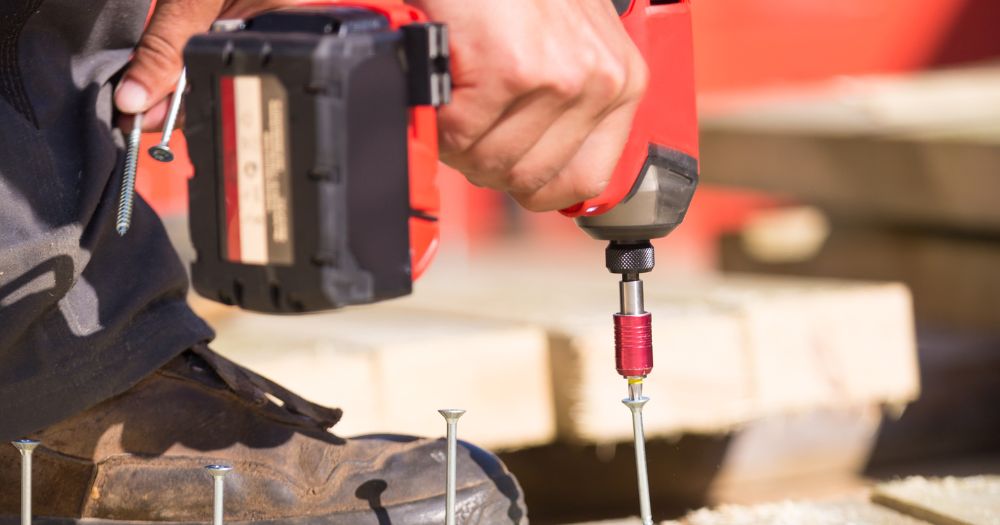
Why Use an Impact Driver for Driving Screws?
Efficiency and Precision
The decision to use an impact driver for driving screws comes down to two critical factors: efficiency and precision. Impact drivers stand out from other tools because of their unique ability to combine power with control, making them an indispensable tool for any project involving screws.
Benefits of using an impact driver for screws:
- Increased Efficiency: Impact drivers deliver high torque at a fast pace, allowing you to drive screws more quickly than with a traditional drill. This is especially noticeable in projects requiring the installation of numerous screws, where time savings can be substantial.
- Enhanced Precision: The concussive action of an impact driver minimizes wrist strain and reduces the risk of stripping screw heads. This precise control is crucial when working with delicate materials or when precision is paramount.
- Adaptability: With an impact driver, adjusting to the resistance of the material is automatic. This means less effort on your part to modulate power, leading to smoother, more consistent screw driving.
- Compact and Lightweight: Impact drivers are generally more compact and lighter than standard drills. This makes them easier to use in tight spaces and reduces fatigue during extended use.
Types of Screws and Materials
Impact drivers excel in versatility, handling a wide array of screw types and materials with ease. Whether you’re working with softwood, hardwood, metal, or plastic, an impact driver adjusts its torque to match the material’s resistance, ensuring optimal performance.
How impact drivers handle various screw types and materials:
- Wood Screws: Perfect for driving into both soft and hardwoods, impact drivers sink screws smoothly without splitting the wood, even near edges.
- Machine Screws: In metalworking projects, an impact driver can drive machine screws into pre-tapped holes with precision, avoiding cross-threading or damage to the material.
- Concrete Screws: While a hammer drill is typically used for creating holes in concrete, an impact driver is highly effective at driving screws into these holes, securing fixtures firmly with minimal effort.
- Deck Screws: The torque and speed of an impact driver make it ideal for driving long deck screws through dense materials, ensuring decks are built quickly and with high structural integrity.
- Self-tapping Screws: For projects involving metal framing or sheet metal, the impact driver’s ability to drive self-tapping screws without pre-drilled holes is a significant advantage, saving time and effort.
The impact driver’s ability to adapt to various screw types and materials, combined with its efficiency and precision, makes it a superior choice for nearly any screw driving task. Whether you’re a professional contractor or a DIY enthusiast, incorporating an impact driver into your toolkit can elevate the quality and speed of your work.
Watch This Video And Learn And Proper Technique For Driving Screws With An Impact Driver
Driving Screws With An Impact Driver
Mastering the art of driving screws with an impact driver not only enhances the efficiency of your projects but also ensures a higher quality of workmanship. Let’s dive into how you can achieve this proficiency, from preparation to execution.
Preparing to Drive Screws
Selecting the Right Bit
The first step in preparing to drive screws with an impact driver is selecting the appropriate bit. Impact drivers require hex-shanked bits that can withstand the tool’s torque and concussive power. Choose a bit that fits the screw head snugly to prevent slipping and potential damage.
Setting Up the Impact Driver
Before you start, ensure your impact driver is properly set up. Check that the battery is fully charged to avoid interruptions. Insert the chosen bit into the collet, making sure it locks into place. If your driver has adjustable settings, select the appropriate torque for your screw and material to avoid overdriving or stripping the screw.
Step-by-Step Guide
- Mark Your Spot: Begin by marking precisely where you want to drive the screw. If necessary, use a punch to create a guide hole, especially when working with hard materials.
- Align the Screw: Place the screw on the bit and hold it steady. Ensure the impact driver is perpendicular to the material for a straight drive.
- Start Slow: Gently press the trigger to start driving the screw. A slow start helps maintain control and alignment.
- Increase Speed: As the screw begins to take hold, gradually increase the speed. The impact driver will automatically adjust its hammering action based on the resistance it encounters.
- Finish Strong: Drive the screw until it’s flush with the material’s surface or at the desired depth. Avoid pushing too hard; let the tool do the work.
Tips for Success
- Ensure Proper Bit Engagement: Before driving, make sure the bit is fully engaged with the screw head to prevent slipping and stripping.
- Use High-Quality Screws: Opt for impact-rated screws when possible. They’re designed to withstand the forces exerted by an impact driver and reduce the risk of breaking.
- Maintain Steady Pressure: Keep a firm, steady pressure on the driver. This helps maintain control and ensures the screw is driven straight.
- Listen to the Tool: Pay attention to the sound and feel of the impact driver. It will provide feedback on how the screw is driving and when to adjust your technique.
- Practice Makes Perfect: If you’re new to using an impact driver, practice on scrap material first. This will help you get a feel for the tool’s power and behavior.
By following these steps and tips, you’ll be able to harness the full potential of your impact driver for driving screws. This skill not only makes your projects go smoother and faster but also ensures a higher level of precision and durability in your work.
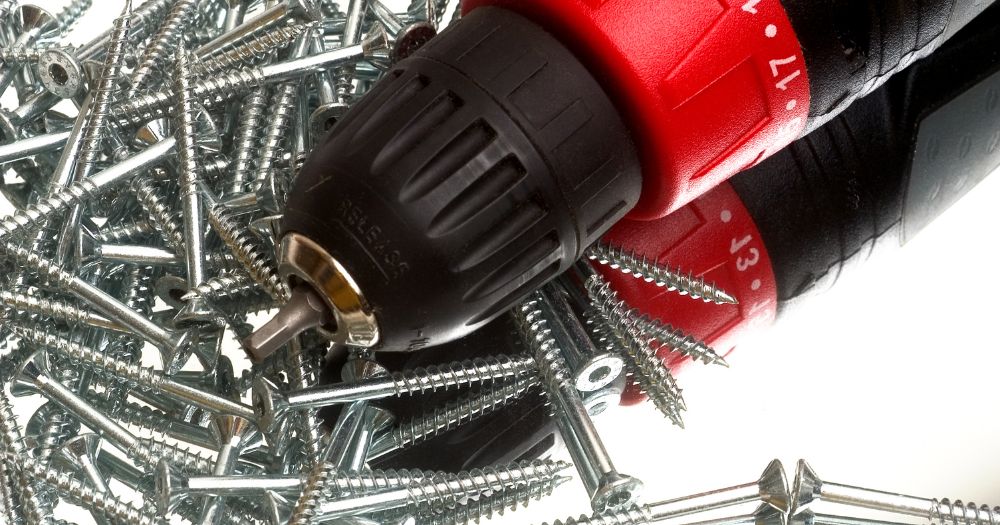
Advanced Techniques and Accessories
Mastering the use of an impact driver not only involves understanding the basics but also learning advanced techniques and utilizing specialized accessories to expand its capabilities. This is especially true when dealing with challenging tasks such as driving long screws or requiring specific functionalities that standard bits don’t provide. Let’s explore how to tackle these advanced applications.
Driving Long Screws
Long screws pose unique challenges due to their length and the increased potential for bending or misalignment. Here are some techniques to ensure successful driving:
- Pre-Drill Pilot Holes: For thick or hard materials, pre-drilling a pilot hole slightly smaller than the screw diameter can reduce resistance and ensure a straight path for the screw.
- Use High-Quality, Impact-Rated Screws: Long screws designed for impact driver use can withstand the torque and stress better than standard screws.
- Maintain Stability: Keep the impact driver steady and aligned with the screw. A second hand on the driver can help maintain control and prevent wobbling.
- Apply Gradual Pressure: Start slowly to establish the screw’s path, then gradually increase speed. This approach helps maintain alignment and reduces the risk of stripping.
Using Specialized Bits and Holders
To maximize the versatility of your impact driver, consider incorporating specialized bits and holders into your toolkit. These accessories can enhance functionality and tackle specific tasks with greater efficiency:
- Torque Limiting Extensions: These extensions prevent over-tightening by flexing once a certain torque level is reached, ideal for delicate installations where precision is critical.
- Right Angle Adapters: Tight spaces or awkward angles are no match for a right-angle adapter, which allows you to drive screws in places where a standard impact driver can’t reach.
- Magnetic Bit Holders: A magnetic holder secures the screw to the bit, facilitating one-handed operation and reducing the chance of dropping screws, especially useful for overhead or hard-to-reach installations.
- Specialty Bits: From triple-square to security torx, specialty bits can drive uncommon screw types. Having a diverse selection ensures you’re prepared for any project.
By employing these advanced techniques and integrating specialized accessories into your workflow, you can tackle complex projects with confidence and efficiency. Whether you’re working with long screws or navigating tight spaces, the right approach and tools can elevate your impact driver’s performance, making every job smoother and more professional.
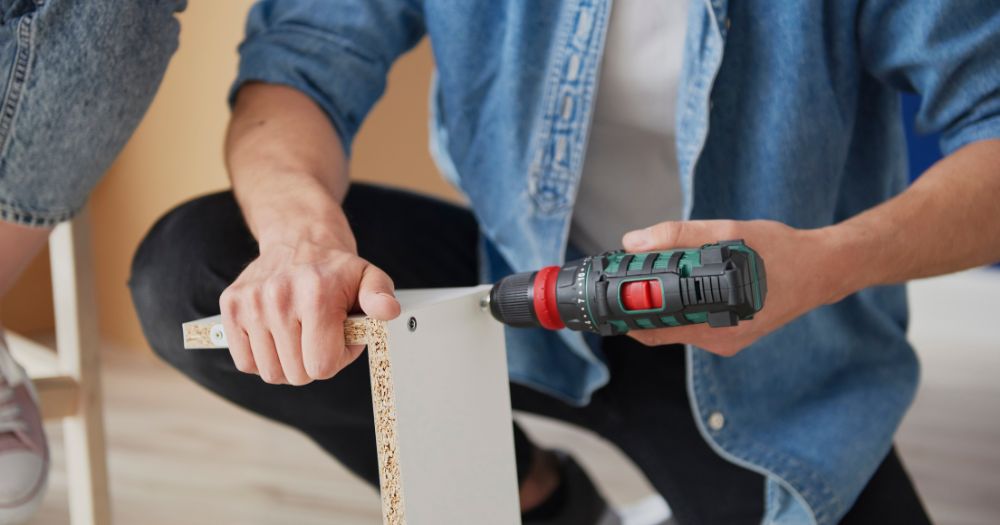
Troubleshooting Common Problems
Even with the right tools and techniques, encountering issues like stripped screws and overdriven fasteners is a common part of any project. Knowing how to avoid these problems and how to deal with them when they arise can save you time and frustration. Let’s dive into some troubleshooting tips for these common issues.
Stripped Screws
Stripped screws occur when the driver bit slips out of the screw head, rounding out the recess and making it difficult to drive or remove the screw. Here’s how to avoid and handle them:
Avoiding Stripped Screws:
- Use the Correct Bit Size: Match your bit to the screw size precisely. A bit that’s too large or too small increases the risk of stripping.
- Apply Consistent Pressure: Maintain steady pressure on the impact driver, ensuring the bit remains fully engaged with the screw head.
- Choose High-Quality Screws: Inferior screws are more prone to stripping. Opt for high-quality, impact-rated screws for best results.
Handling Stripped Screws:
- Use a Rubber Band: Place a rubber band over the stripped head, then press the bit through it into the screw. The rubber can provide enough grip to remove the screw.
- Screw Extractors: For screws that are severely stripped, a screw extractor kit can be used to grip and turn the screw out of the material.
Overdriving Screws
Overdriving occurs when a Here’s screw is driven too deep into the material, potentially weakening the connection or damaging the material. how to prevent it:
Tips to Prevent Overdriving Screws:
- Adjust Torque Settings: If your impact driver has adjustable torque settings, use them to limit the driving force and prevent overdriving.
- Practice Makes Perfect: Gain a feel for how your impact driver behaves by practicing on scrap material. This can help you anticipate when to release the trigger.
- Use Depth Stops: Some impact drivers and bits come with depth stops or settings. These accessories can help ensure consistent screw depth across your project.
By implementing these strategies, you can significantly reduce the likelihood of encountering stripped or overdriven screws. However, should these issues arise, knowing how to address them swiftly and effectively will keep your project on track and maintain the integrity of your work.
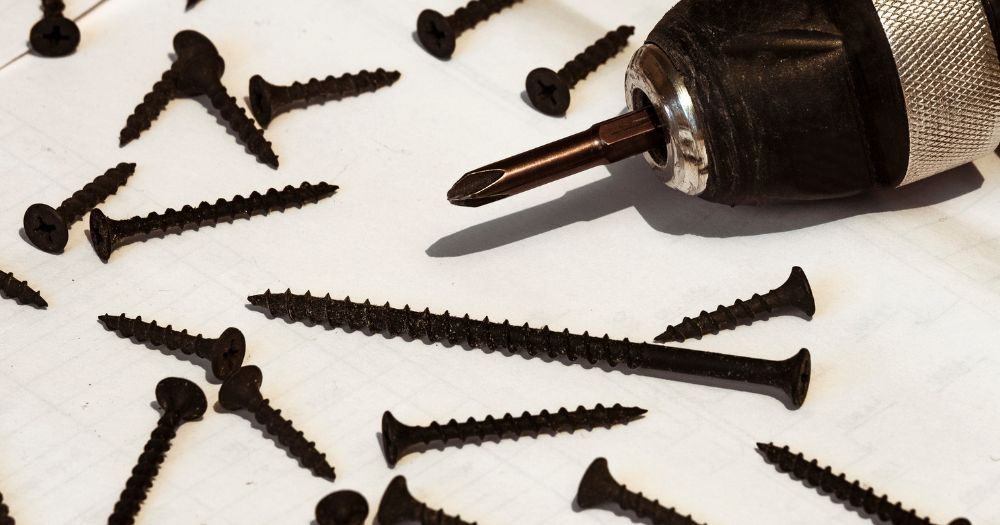
Wrapping Up Proper Technique For Driving Screws With An Impact Driver
Throughout this comprehensive exploration of Driving Screws With An Impact Driver, I’ve dived into the nuances that make impact drivers an indispensable tool in both professional and DIY contexts. From understanding the fundamental differences between impact drivers and traditional drills, to mastering the art of driving screws with precision and efficiency, I have covered the essentials that empower users to make the most of their tools.
So, don’t be shy drop us a comment with your thoughts, experiences, or questions about using impact drivers or any other tool-related inquiries. Let’s keep the conversation going and continue to support each other in mastering the art of driving screws and beyond. Your insights could be the very thing someone else needs to hear to tackle their next project with confidence!

